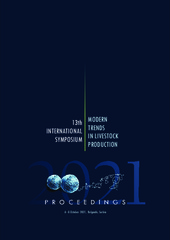Приказ основних података о документу
Biofortification as a way of nutrient dense feed production
| dc.creator | Dragičević, Vesna | |
| dc.creator | Simić, Milena | |
| dc.creator | Brankov, Milan | |
| dc.creator | Šenk, Milena | |
| dc.creator | Krnjaja, Vesna | |
| dc.creator | Mandić, Violeta | |
| dc.creator | Kresović, Branka | |
| dc.date.accessioned | 2021-10-14T10:57:12Z | |
| dc.date.available | 2021-10-14T10:57:12Z | |
| dc.date.issued | 2021 | |
| dc.identifier.isbn | 978-86-82431-77-0 | |
| dc.identifier.uri | http://r.istocar.bg.ac.rs/handle/123456789/739 | |
| dc.description.abstract | Malnutrition is a global problem, hitting both, people and animals. Due to the many factors, such as climate change, soil depletion, anthropogenic impact, including irresponsible soil management, high fertilization rates with macro-nutrients, crops lack in essential nutrients, particularly minerals, Mg, Fe, Zn, etc., as well as important vitamins, like carotenoids, vitamins from B group. Also, some arable soils have naturally low fertility. All of that negatively affect production of domestic animal, including animal health and quality of livestock products. To mitigate malnutrition, a bio-fortification strategy was developed. It is based on increase in the concentration of essential nutrients in food and feed, and also to promote further bio-availability from digestive organs. Bio fortification implies various practices. Two main types of bio-fortification were developed: genetic bio-fortification, and agronomic bio-fortification. The first one uses standard breeding techniques, marker assistant selection, transgenic approaches, genome editing, etc., to develop highly-efficient genotypes, that are able to absorb and accumulate higher concentrations of essential nutrients in biomass and grains. Agronomic bio-fortification uses different practices, such is special fertilizers, enriched with essential minerals, foliar fertilizers, bio-fertilizers, growth hormones and enhancers, and some lesser known sustainable practices, like inter-cropping, cover cropping, in order to increase crop yields, as well as the concentration of essential nutrients. The bio-fortification approach, based on the development and commercialisation of highly efficient genotypes, as well as agricultural practices that enable and support better absorption and accumulation of essential nutrients option that is safer for both, people and domestic animals. Mutual increase in concentration of essential minerals, vitamins, and other promoting substances is of a particular importance for bio-fortification programs, increasing efficiency and success of applied practices, thus positively reflecting on animal health and wellbeing. | sr |
| dc.language.iso | en | sr |
| dc.relation | info:eu-repo/grantAgreement/MESTD/inst-2020/200022/RS// | sr |
| dc.rights | openAccess | sr |
| dc.rights.uri | https://creativecommons.org/licenses/by/4.0/ | |
| dc.source | Proceedings of the 13th International Symposium "Modern Trends in Livestock Production", 6 - 8 October 2021, Belgrade, Serbia, 287-307 | sr |
| dc.subject | breeding | sr |
| dc.subject | cropping practices | sr |
| dc.subject | mineral nutrients | sr |
| dc.subject | antinutrients | sr |
| dc.subject | promoters | sr |
| dc.title | Biofortification as a way of nutrient dense feed production | sr |
| dc.type | conferenceObject | sr |
| dc.rights.license | BY | sr |
| dcterms.abstract | Драгичевић, Весна; Кресовић, Бранка; Мандић, Виолета; Крњаја, Весна; Шенк, Милена; Бранков, Милан; Симић, Милена; | |
| dc.citation.spage | 287 | |
| dc.citation.epage | 307 | |
| dc.identifier.rcub | https://hdl.handle.net/21.15107/rcub_ristocar_739 | |
| dc.identifier.fulltext | http://r.istocar.bg.ac.rs/bitstream/id/3894/bitstream_3894.pdf | |
| dc.type.version | publishedVersion | sr |


